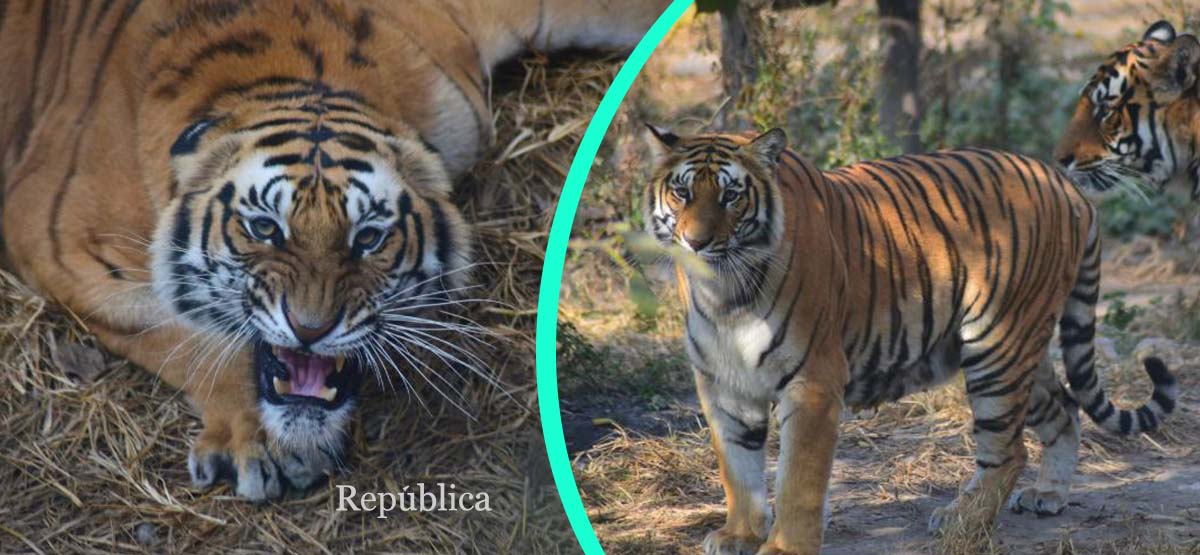
OR
Eight tigers killed by poachers in four years
Published On: February 9, 2022 04:30 PM NPT By: Arjun Oli

NEPALGUNJ, Feb 9: At a time, when the government is making efforts to conserve tigers, as many as eight tigers from Banke to Shuklaphanta National Park, have lost their lives in past four years due to poaching, revenge and illegal trade, according to an official.
According to Dr Rabin Kadaria of the National Trust for Nature Conservation (NTNC), three tigers were killed in Banke, two in Bardiya, one in Kailali and two in Shuklaphanta National Park. “Since 2018, eight tigers have been killed and they didn’t die natural death but were killed due to poaching, revenge or illegal trade,” Dr Kadaria said.
“Despite Nepal being successful in conserving tigers, there has also been a huge challenge for us to save these tigers from illegal trading,” Dr Kadaria said. According to him, conservation is a challenge because of the conflict between humans and wildlife.
Similarly, he said that the density of tigers in Banke and Bardiya is about six tigers per 100 square kilometers. “While there are up to 14 tigers per 100 sq. km in India's national parks, we have a small number of tigers," he added.
28 people from Banke to Kailali have lost their lives in a tiger attack
According to NTNC, 28 people have been killed in tiger attacks from Banke to Kailali since 2019. Of them, six people have died in Banke. But no death has been reported in the village so far. Kadaria said.
"All the deaths occurred in the jungle and during the day time. The deaths occurred only when people went to the forest to cut grass and pick mushrooms and firewood," Dr. Kadaria said. According to him, there was a negative message about tigers in the society and if every community could understand the importance of tigers, the conflict between tigers and humans could be reduced.
Chief Conservation Officer of Banke National Park, Shyam Kumar Shah said that the park has the capacity to give shelter to more tigers as their density is currently low in the area. “We have the capacity to accommodate more tigers in the park. However, there is a tendency to release cattle in the forest due to which tigers attack these cattle and humans instead of other wild animals,” Shah said.
You May Like This

Manage tiger-human conflict to save tigers
The practice of killing tigers under various pretexts has grown lately in Nepal. Sometimes, tigers are killed out of anger... Read More...

Tigers' population in Banke National Park rises from 4 to 21 in five years
DHAMBOJI, July 31: The number of tigers in Banke National Park (BNP) has gone up in the beginning of current... Read More...

Tigers, flies and foxes
We are squeezed between China and India, not just graphically but even in our reasoning and ideology. To the north,... Read More...



Just In
- 550,000 people acquire work permits till April of current fiscal year
- Fixing a win by outlawing dissent damages democracy
- MoHP cautions docs working in govt hospitals not to work in private ones
- Over 400,000 tourists visited Mustang by road last year
- 19 hydropower projects to be showcased at investment summit
- Global oil and gold prices surge as Israel retaliates against Iran
- Sajha Yatayat cancels CEO appointment process for lack of candidates
- Govt padlocks Nepal Scouts’ property illegally occupied by NC lawmaker Deepak Khadka









_20220508065243.jpg)



Leave A Comment